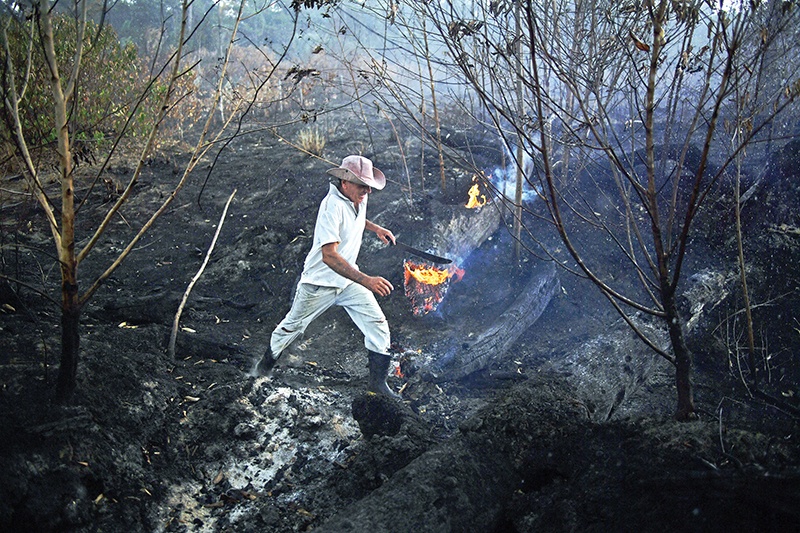
KINSHASA: In NASA
satellite images, forest fires in central Africa appear to burn alarmingly like
a red chain from Gabon to Angola similar to the blazes in Brazil's Amazon that
sparked global outcry. At the G7 summit this week, French President Emmanuel
Macron tweeted about the central Africa fires and said nations were examining a
similar initiative to the one proposed to combat Brazil's blazes.
G7 nations have
pledged $20 million on the Amazon, mainly on fire-fighting aircraft. Macron's
concern may be legitimate, but experts say central Africa's rainforest fires
are often more seasonal and linked to traditional seasonal farming methods. No
doubt the region is key for the climate: The Congo Basin forest is commonly
referred to as the "second green lung" of the planet after the
Amazon. The forests cover an area of 3.3 million square kilometres in several
countries, including about a third in the Democratic Republic of Congo, and the
rest in Gabon, Congo, Cameroon and Central Africa.
Just like the
Amazon, the forests of the Congo Basin absorb tons of carbon dioxide (CO2) in
trees and peat marshes - seen by experts as a key way to combat climate change.
They are also sanctuaries for endangered species. But most of the fires shown
on the NASA maps of Africa are outside sensitive rainforest areas, analysts
say, and drawing comparisons to the Amazon is also complex. "The question
now is to what extent we can compare," said Philippe Verbelen, a Greenpeace
forest campaigner working on the Congo Basin.
"Fire is
quite a regular thing in Africa. It's part of a cycle, people in the dry season
set fire to bush rather than to dense, moist rainforest." Guillaume
Lescuyer, a central African expert at the French agricultural research and
development centre CIRAD, also said the fires seen in NASA images were mostly
burning outside the rain forest.
Angola's
government also urged caution, saying swift comparisons to the Amazon may lead
to "misinformation of more reckless minds". The fires were usual at
the end of the dry season, the Angolan ministry of environment said. "It
happens at this time of the year, in many parts of our country, and fires are
caused by farmers with the land in its preparation phase, because of the
proximity of the rainy season," it said.
DIFFERENT RISKS
Though less
publicised than the Amazon, the Congo Basin forests still face dangers.
"The forest burns in Africa but not for the same causes," said Tosi
Mpanu Mpanu, an ambassador and climate negotiator for the DR Congo. "In
the Amazon, the forest burns mainly because of drought and climate change, but
in central Africa, it is mainly due to agricultural techniques." Many
farmers use slash-and-burn farming to clear forest. In DR Congo, only nine
percent of the population has access to electricity and many people use wood
for cooking and energy.
DR Congo
President Felix Tshisekedi has warned the rainforests are threatened if the
country does not improve its hydro-electric capacity. Deforestation is also a
risk in Gabon and parts of the DR Congo, as well as damage from mining and oil
projects. Some countries are now implementing stricter environmental policies.
Gabon, for example, has declared 13 national parks that make up 11 percent of
its national territory.
DR Congo has
declared a moratorium on new industrial logging licences but that has not
stopped artisanal cutting, which industrial loggers can exploit. "We need
to protect the forests that are still largely intact and stop degradation,"
said Greenpeace's Verbelen. "The forests that are still intact remain an
important buffer for future climate change." - AFP










